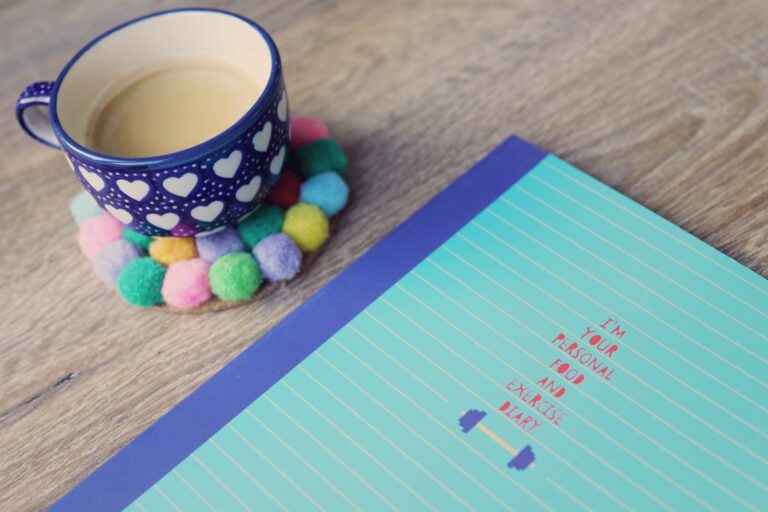The Science Behind Periodization: Tailoring Your Workout Routine
Are you tired of hitting a plateau with your workout routine? Do you want to see more results and feel like you’re making progress towards your fitness goals? The solution may lie in the science behind periodization. By tailoring your workouts to fit specific phases, you can optimize your gains and reach new levels of strength and endurance.
In this blog post, we’ll dive into the details of what periodization is, how it works, and why it’s essential for anyone serious about their health and fitness journey. Get ready to take your workouts to the next level!
Introduction to Periodization Workouts

Most people are familiar with the traditional linear model of periodization, which generally involves dividing the year into distinct mesocycles, microcycles, and workouts. Each mesocycle lasts for several weeks and focuses on a different goal, such as increasing strength or improving endurance. Microcycles are smaller divisions of training within mesocycles, often lasting just a few days. Workouts are individual sessions within microcycles.
While this linear model can be very effective, it’s not the only way to periodize your workout routine. In recent years, researchers have begun to explore other models of periodization that might offer even more benefits. One of these is called block periodization.
With block periodization, you divide your training into distinct blocks that each focus on a specific goal. For example, you might have a four-week block where your sole focus is increasing strength. Once that block is complete, you would move on to another four-week block focused on improving endurance.
This type of workout routine has several advantages over the traditional linear model. First, it allows you to really focus on one thing at a time and make the most progress possible in that area before moving on to something else. Second, it keeps your body from adapting too much to any one type of training stimulus, which can help you avoid plateaus in your progress. Finally, it can help you stay motivated by variety in your workouts and always giving yourself something new to work towards.
What is Periodization?
Periodization is the process of dividing a training program into distinct phases, each with a specific goal. The simplest form of periodization is the linear model, which involves progressing from one phase to the next in a linear fashion. Typically, linear periodization programs are used by beginner and intermediate lifters, as they are relatively easy to follow and don’t require much planning.
However, more experienced lifters may find that linear programs fail to take into account their individual strengths and weaknesses, leading to stagnation or even regression. This is where non-linear periodization comes in. Non-linear programs are more flexible, and can be customized to better suit the needs of the individual lifter.
Both linear and non-linear periodization have their place in a well-rounded training program. However, it’s important to understand the differences between the two before choosi ng which type of program is right for you.
The Three Different Types of Periodization
In the world of fitness, there are a few different types of periodization that people use to help them meet their goals. The three main types are linear, undulating, and block. Each one has its own benefits and drawbacks, so it’s important to understand all three before you decide which will work best for you.
Linear periodization is the most common type of periodization used by people who are new to lifting or those who don’t have a lot of time to dedicate to their workout routine. With linear periodization, you focus on one element of your workout at a time and gradually increase the intensity over time. For example, if you’re focused on building muscle, you would start with light weights and gradually increase the weight lifted as your muscles get stronger.
The main benefit of linear periodization is that it’s simple to follow and easy to stick to. The drawback is that it can take a long time to see results because you’re only focusing on one element at a time.
Undulating periodization is similar to linear periodization in that you’re still focusing on one element at a time, but the intensity levels are not increased steadily over time. Instead, they vary from week to week or even day to day. This type of periodization is often used by experienced lifters who are looking for more variety in their workouts.
The main benefit of undulating periodization is that it can help break through plateaus because you’re continually switching up your intensity levels. The main drawback is that it can be difficult to stick to at times due to the varying intensity levels.
Finally, there’s block periodization which combines linear and undulating periodization into one program. With block periodization, you focus on one element of your workout for an entire month before switching to a different element. For example, if you’re focused on building muscle, you would start by lifting heavy weights for an entire month before switching to lighter weights for the next month.
The main benefit of block periodization is that it allows you to get the best of both worlds: variety (like with undulating) and the ability to gradually increase intensity (like with linear). The drawback is that it can be a bit more complicated to track than other types of periodization.
Benefits of Periodization
The most obvious benefit of periodization is that it can help you avoid plateaus in your progress. By constantly varied the types and intensities of your workouts, you can keep your body guessing and continue to make gains. In addition, by focusing on different aspects of fitness at different times, you can ensure that you are well-rounded and avoid overuse injuries.
Another big benefit of this type of training is that it can help you peak for important events or competitions. By carefully planning your training cycles, you can make sure that you are in peak condition when it matters most. This can give you a significant advantage over your competition.
Finally, periodization can simply make your workouts more interesting and enjoyable. If you are always doing the same thing, it is easy to get burned out. By mixing things up, you can keep yourself motivated and excited about your fitness journey.
How to Choose the Right Periodization Plan
When it comes to your workout routine, you want to make sure you are getting the most out of it. That means choosing the right periodization plan.
There are a few things to consider when choosing a plan:
-Your goals: What are you trying to achieve with your workout routine? Are you looking to build muscle, lose fat, or improve your cardiovascular health?
-Your schedule: How much time do you have to dedicate to working out each week? Are you able to stick to a regular schedule or do you need a more flexible approach?
-Your fitness level: Are you a beginner, intermediate, or advanced exerciser? This will dictate how much intensity and volume you can handle in your workouts.
Once you have answers to these questions, you can start looking at different periodization plans. There are linear, nonlinear, and undulating approaches. Each has its own benefits and drawbacks. It’s important to find one that fits your goals, schedule, and fitness level.
If you’re not sure where to start, talk to a certified personal trainer who can help you create a custom plan that’s right for you.
Examples of Program Design and Schedule Layout
When it comes to designing a workout routine, there is no one-size-fits-all approach. The type of program and schedule that you create should be based on your individual goals and needs. However, there are some general principles that can be followed when crafting a workout plan.
One key element of program design is periodization. This approach involves breaking down your training into distinct phases, each with its own specific goals. For example, you might have a preparatory phase to build a base of strength and endurance, followed by a competitive phase where you focus on sharpening your skills for race day. By carefully planning out each phase of training, you can maximize your results and avoid overtraining or injury.
Another important consideration in program design is choosing the right exercises for your goals. There are literally thousands of different exercises to choose from, so it’s important to select those that will help you reach your specific objectives. For instance, if you’re trying to improve your running speed, sprints and plyometric exercises would be more beneficial than long-distance jogging. It’s also important to make sure that you’re using proper form when performing each exercise; incorrect technique can lead to injuries and impede your progress.
Finally, it’s critical to create a schedule that fits both your lifestyle and your goals. If you’re trying to lose weight, for example, working out first thing in the morning may be more effective than exercising later in the day. But if early rises don’t work for you, focus on creating a schedule that can be integrated into your daily routine. The important thing is to find a plan that works for you and stick with it over time.
In conclusion, effective program design and scheduling should be tailored to the individual’s goals and lifestyle. By incorporating periodization, choosing the appropriate exercises, and creating a practical schedule, you can create a workout plan that will help you reach your fitness objectives in an efficient and safe way.
Components of Structuring a Program
As we all know, the basis for any good workout routine is a sound structure. This is what allows you to periodize your workouts, and ultimately tailor them to your specific needs and goals. But what exactly goes into structuring a program? Here’s a look at the components of a well-structured workout routine:
- A clear goal or set of goals: Without a clear goal, it will be very difficult to structure your workouts in a meaningful way. What are you trying to achieve with your training? Do you want to improve your strength, endurance, or power? Or are you trying to achieve a more general fitness goal? Once you have a clear goal in mind, you can begin to structure your workouts accordingly.
- A progressive overload: In order to continue making progress with your workouts, you need to progressively overload your body. This simply means that you need to gradually increase the demands placed on your body over time. For example, if you’re lifting weights, you would gradually increase the amount of weight lifted over time. If you’re running, you would gradually increase the distance or intensity of your runs over time.
- A variety of exercises: It’s important to include a variety of exercises in your workout routine in order to work all the major muscle groups and maintain interest (and prevent boredom). You don’t need to do every exercise under the sun, but make sure that your routine includes exercises for the major muscle groups (leg s, back, shoulders, chest, etc.).
- Include rest days: No matter what type of training you’re doing; make sure to include rest days in your program. This is essential for recovery and minimizing the risk of injury.
- Periodization: In order to achieve the best results from your workout routine, it’s important to periodize your workouts. Periodization is simply the practice of alternating between different types and intensities of training over a set period of time (usually 4-6 weeks). For example, in the first week of a mesocycle you would focus more on strength and power exercises; whereas in the second week you might focus more on hypertrophy (muscle building) exercises; in the third week you might focus more on endurance; and so on. By focusing on different elements each week you can target specific areas while keeping things interesting and avoiding plateaus or burnout.
- Tracking: It’s also important to track your progress as this will allow you to measure success and give you motivation to continue challenging yourself with your workouts. You can track your progress by noting down how much weight/distance/time/reps you have completed for each workout and also take regular measurements such as bodyweight, waist circumference, or body fat.
Alternatives to Periodization Routines
Periodization involves breaking down your workout routine into smaller, manageable pieces and then gradually increasing the intensity of those workouts over time. This approach can be very effective for people who are looking to improve their overall fitness level or train for a specific event. However, it is not the only option available to people who want to stay in shape or improve their athletic performance. Here are a few alternatives to periodization routines:
1) Circuit training: This type of workout involves going from one exercise to the next with little rest in between. It is a great way to get your heart rate up and burn calories, and it can be adapted to any fitness level.
2) High-intensity interval training (HIIT): HIIT workouts alternate periods of high-intensity activity with periods of lower-intensity activity or rest. This type of workout is very effective for improving cardiovascular fitness and burning calories.
3) Strength training: Strength-training workouts focus on building muscle mass and improving strength. This type of workout can be done with free weights, weight machines, or bodyweight exercises.
4) Flexibility training: Flexibility training helps improve range of motion and flexibility. This type of workout can be done through stretching exercises or yoga.
5) Plyometrics: Plyometric exercises involve explosive movements that help improve power and coordination. These types of exercises are often used by athletes to improve their performance.
Conclusion
Periodization is an incredibly powerful tool for tailoring your workout routine to suit your needs and reach maximum results. You can tailor the periodized plan in a way that best suits you, adjusting intensities and types of workouts, exercising at different times of day or emphasizing different muscle groups. With careful planning and implementation it’s possible to ensure that every component of your fitness program is perfectly suited to help you achieve your goals as quickly and efficiently as possible.






